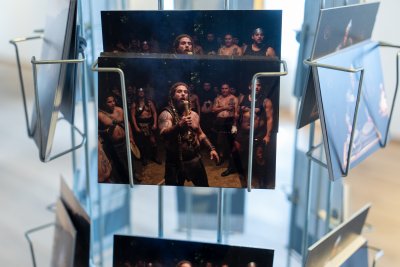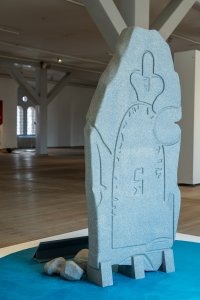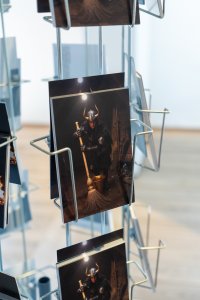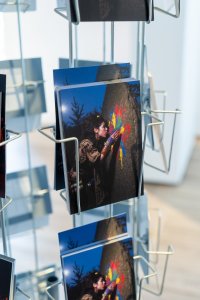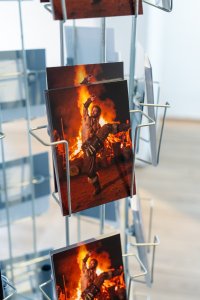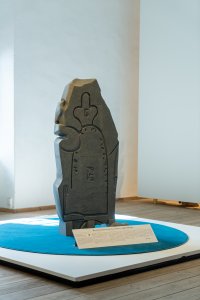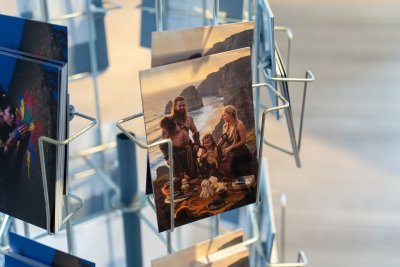Project Details
The Good, the Lost, and the Beautiful is a reconstruction of the Lee-stone, one of nine runestones believed to have been lost in the Copenhagen Fire of 1728. Standing at 1.5 metres, the piece draws on 17th-century drawings by Jón Skonvig, known for his work with antiquarian Ole Worm. Transported from Midtjylland to Copenhagen in the early modern period, the stone’s inscriptions eroded over time, leaving only fragmentary traces: “Dor... raised the stone after...” This work presents the Lee-stone as both a record of historical damage and a speculative object shaped by contemporary tools and interpretations.
The installation is accompanied by a series of AI-generated postcards that reimagine Viking life in the style of idealised holiday imagery. Figures gather for shared meals, sweep longhouse floors, inscribe runes like graffiti, perform stylised rituals, or take part in dance battles and DJ sets using flat stones. Generated with a Chinese variant of the Huyuan algorithm, the images include intentional misreadings of the runic inscriptions, echoing centuries of translation, loss, and projection.
A central relief on the reconstructed stone, possibly once a hammer, is reimagined here as a spray can, folding historical reference into playful anachronism. The postcards extend this blending of eras, presenting scenes where identity, memory, and cultural imagination converge and transform.
The work forms part of De Tabte Runesten, a group exhibition returning nine lost cultural artefacts to Rundetaarn through the visions of contemporary artists. Alongside the artworks, the programme includes talks, workshops, and events exploring the histories and relevance of these vanished monuments.
